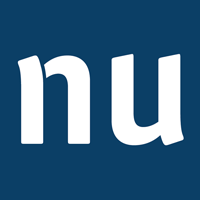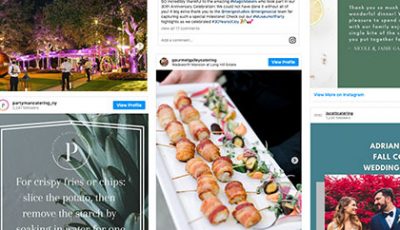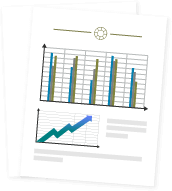Measuring the Value of Social Media Marketing

Social media. Ever heard of it?
Of course you have, and you’ve likely heard a mixture of success and failure stories. That’s because almost everyone’s on it, but not everyone knows how to properly maximize their returns with it. And even less know how to measure their successes or failures on social media.
Here’s what we know:
97 percent of marketers are using social media to promote their business.
More than half of these marketers plan to increase their use of the following social media platforms: blogging, YouTube, Twitter, LinkedIn, Facebook, Google+ and Pinterest (that’s seven of the eight biggest platforms!).
In an Adobe survey of 225, 52 percent of businesses measured that their biggest frustrations with social media are the difficulties in accurately measuring the ROI and 88 percent said they were dissatisfied with social media measurement effectiveness.
Here’s what we gather from these figures:
Your company is on social media. You think you can be doing a better job, but you don’t know how to measure if it’s worth the time or money. This makes you mad!
Sound familiar?
Chances are you’ve probably toyed around with the idea of expanding your marketing activities to involve more social media (we’ve all done it!).
You know your clients are all over it, but what is that increase in social activity worth to you?
How much does it cost to be socially active?
What is the return on investment for an active social media program or for hiring an employee to do social media?
Let’s find out your magic number.

Instead of walking you through each step, we suggest using this calculator to determine your social media ROI.
To do the calculations, you will need the following numbers:
- Cost to set up social media
- Value of your incoming traffic (including average cost per click)
- PR Value
- Word-of-mouth value
- Research value
- Cost of social media maintenance

We went through the same calculations by using real numbers from an actual account. (We left out the [city] in the best interest of the client.)
This example should help you determine your own ROI calculation numbers.
Social Media Setup Costs: This brand’s social media profiles were already setup so that the profiles only required a small amount of time to optimize. Therefore, we kept the estimate on the low side, basing solely on time to conduct very minimal upgrades.
The cost to setup social media is $240.
Value of Incoming Traffic: In our example, we looked at the following on Google AdWords to determine our average cost per click in the brand’s geographical market:
- Catering in [city] –Suggested Bid $4.04
- [city] corporate catering – Suggested Bid $7.00
- Wedding caterers [city] – Suggested Bid $6.72
Average cost per click based on these three competitive terms is $5.92, which is what we used to calculate the value of incoming traffic.
This client is VERY active on five of the biggest social networks, spending 10-20 hours per week on: Facebook, Twitter, Pinterest, Google and Instagram. In our example, we took the average daily clicks from those social media outlets to calculate the ROI. The brand’s average number of daily clicks from social networks is 45.
Therefore, the annual value of incoming traffic is $97,236.
PR Value: Since social media is public facing, you never know who is going to see your post. While it’s truly hard to put a price tag on press placement, there are companies that have received press placement because they are active on social media.
For example, the story runs in your local newspaper. According to Ragan PR Daily, “PR takes the value of advertising and builds upon it based on enhanced impact. Editorial is third-party opinion, so the impact is considered three times that of a paid advertisement. For instance, if a half-page ad in the local newspaper costs $500, then a half-page worth of editorial in the same newspaper would be valued at $1,500.” In other words, PR is three times more valuable than an ad in the same publication.
In this case, we played it safe assuming that just one PR placement resulted from the brand’s increase in social media activity. We played it safe again assuming that an ad in this particular publication cost $500, so we tripled that to estimate the PR value to be $1,500.
Word-of-Mouth Value: Whether capturing the perfect wedding moment or creating a valuable blog post, word-of-mouth means getting not just anybody to interact with your work, but getting socially influential people on social media outlets sharing and reposting your stuff to much larger audiences!
We asked ourselves, what’s the value of a repost and the new audience the repost now reaches?
In this case, we estimated one influential repost per month with a $100 value per post comes to a total value of $1,200.
Research Value: Our client (and we) wanted to know what customers thought of the brand, its new menu items, new venue locations, etc. Social media gives the option to directly reach out to customers and engage them on an array of topics without the expensive cost of a focus group. It also gives them a chance to feel like they are part of a brand, especially when they’re asked about things like what a brand should add to its menu.
In this case, we ran one study per year that otherwise would have required a focus group now run on social media. This Bloomberg.com article cites, “If you hire a firm, a focus group can cost $2,000 to $5,000, including the $75-to-$100 fee paid to each participant.”
So, we estimated the value of research to be $2,500.
Social Media Maintenance Costs: Last, but not least, is the cost of maintaining social media.
The brand’s social media can take anywhere from 10 to 20 hours per week for all five accounts. We used 15 hours per week for this example and estimated that the average rate of pay for an employee handling social media is $20/hour.
Therefore, the annual maintenance cost is $15,600.

The ROI on this brand’s social media program is $86,596.
*Note: this is an example of a brand that has been “active” on social media for several years and thus already had a developed presence. While this brand is very active, part of the success and high rate of return on social media results from great “content sharing” from a major content marketing plan. This brand opted to allocate its Google AdWords and pay-per-click budgets toward a website content plan and social media promotion to build more organic and social traffic. Not all companies will have this return, unless they also have valuable content to share with their intended audience(s). Great content might include event photos, recipes, checklists, themes, event ideas, tips and more. Brands new to social media should also focus on building a loyal following and creating valuable content before expecting to see successful results as these do.



